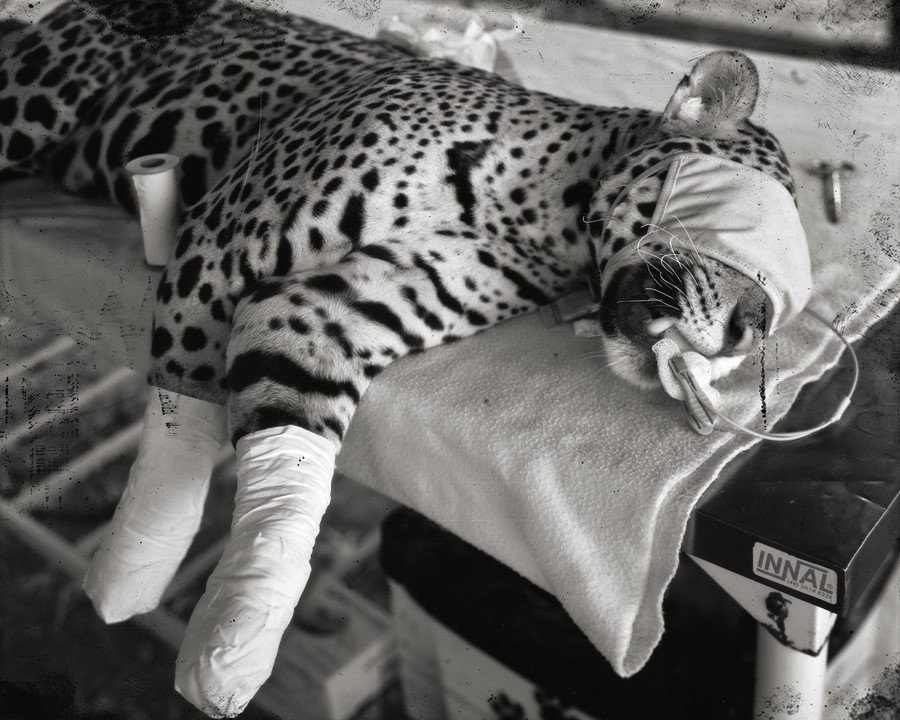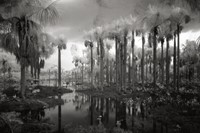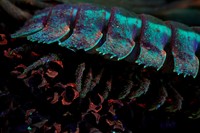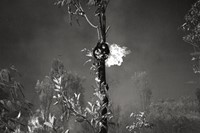“You might feel the blood on your hands, as I do,” says Richard Mosse of his latest book, which captures the destruction and devastation of the Amazon Basin in unflinching detail
In the summer of 2019, the Brazilian Amazon was on fire. Photographer Richard Mosse had been working in the cloud forests of Ecuador and Peru, creating nocturnal photographs of the biome illuminated with ultraviolet light. “That project was restorative for me. I’d just finished a long, rather harrowing project on refugees, involving constant travel and sometimes witnessing difficult scenes. I wanted to take some time for myself and make these strange garish images of the intimate natural world using ultraviolet light,” says Mosse. “Then the forest started being burned on a huge scale.”
A symptom of far-right figurehead Jair Bolsonaro’s rise to power, Mosse felt an urgency to turn his lens towards the smoke. The resulting body of work is Broken Spectre, an immersive 74-minute film and accompanying book of photographs and film stills.
The fieldwork took “years in the back of a pickup truck along extremely bumpy roads” and involved befriending climate criminals who proudly posed for portraits in front of smouldering trees or as they set light to the landscape. “These are sometimes ruthless people, often armed. But they are also people, and they are very often proud of what they have achieved. If you show respect and interest, they will repay that with hospitality. That’s the ambiguity of what we encountered. Really fine people carrying out environmental devastation. You could probably say the same about each of us too, right?” Mosse says.
That question points to one of his aims for the work, to give the viewer agency. “At its strongest, when my work is really working, you might feel the blood on your hands, as I do,” he says. It’s near impossible not to as Adneia, who lives in Yanomami Territory on the Brazilian border with Venezuela, delivers a speech to camera about her family’s experiences at the hands of illegal gold miners. The anguish is palpable, both on film and as stills.
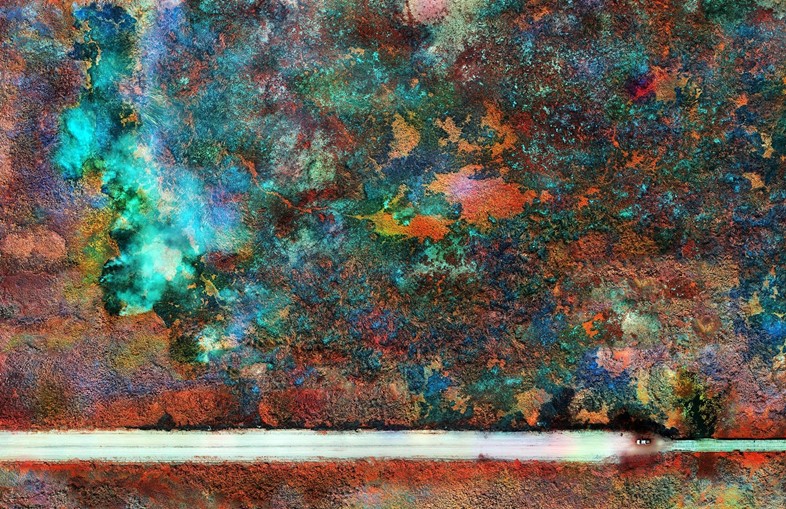
Aesthetically, Broken Spectre occupies a selection of artistic and photographic planes. Black-and-white stills and photographs document forests burning, swathes of smoke, wildlife under pressure, and Indigenous activists; plant life is rendered in ultraviolet on the microlevel, roots and tendrils mirroring the intricacy of the biome as a whole; while aerial images of charred and barren landscapes offer the macro view. For the latter, Mosse borrowed from science, employing multispectral imaging which can capture light from a range of wavelengths, making the invisible visible.
“How can a storyteller or an artist – but particularly a photographer, bound to the distinctly concrete technical device of the camera – begin to tell this story?” he asks. “Well, it is photography that’s allowed environmental scientists to detect and understand not just the extraordinary scale of deforestation but the damage sustained by the mighty forest itself, an extremely resilient ecology.” The satellite-bound multispectral cameras that have captured such information over the past thirty years provide, Mosse says, a quantitative form of photography, used as data. But as a storyteller, he moved beyond scientific boundaries, vibrant colours revealing ecological damage which the human eye cannot ordinarily bear witness to.
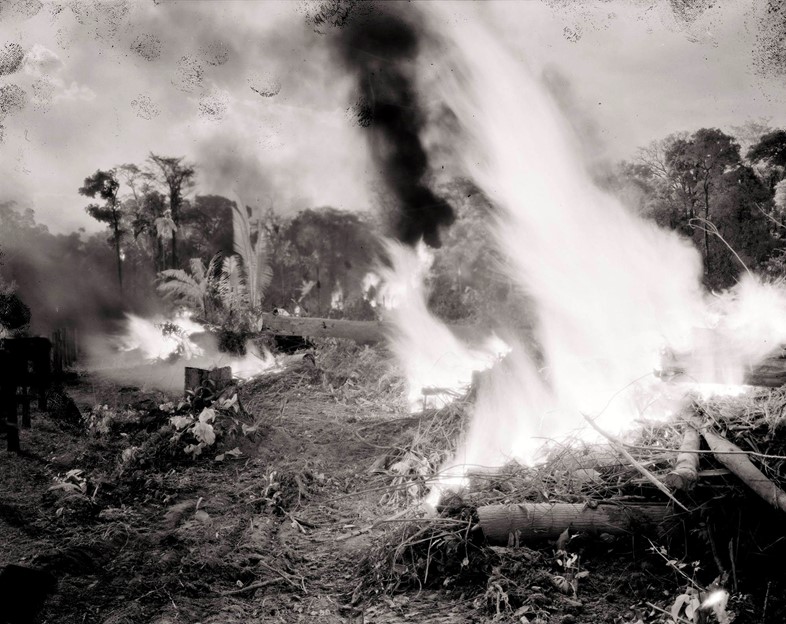
Fiery oranges, hot pinks, acid greens and milky blues coalesce to tell a story of destruction within Broken Spectre, but as individual images the aerial shots are incredibly beautiful: climate crimes worth framing. Mosse doesn’t shy away from this dichotomy. Admitting that it has invited criticism, he says, “Personally, I don’t see any conflict between aesthetics and documentary forms, they’re entirely different yet they work together. I think our minds have been jumbled by some stilted ideas at some point in the recent past. I’m an artist. It’s what we do, we communicate through aesthetics. It’s pretty much all we can do. And when we do it well, we can change the world. So, let’s get on with it.”
Broken Spectre by Richard Mosse is published by Loose Joints and is out now.
